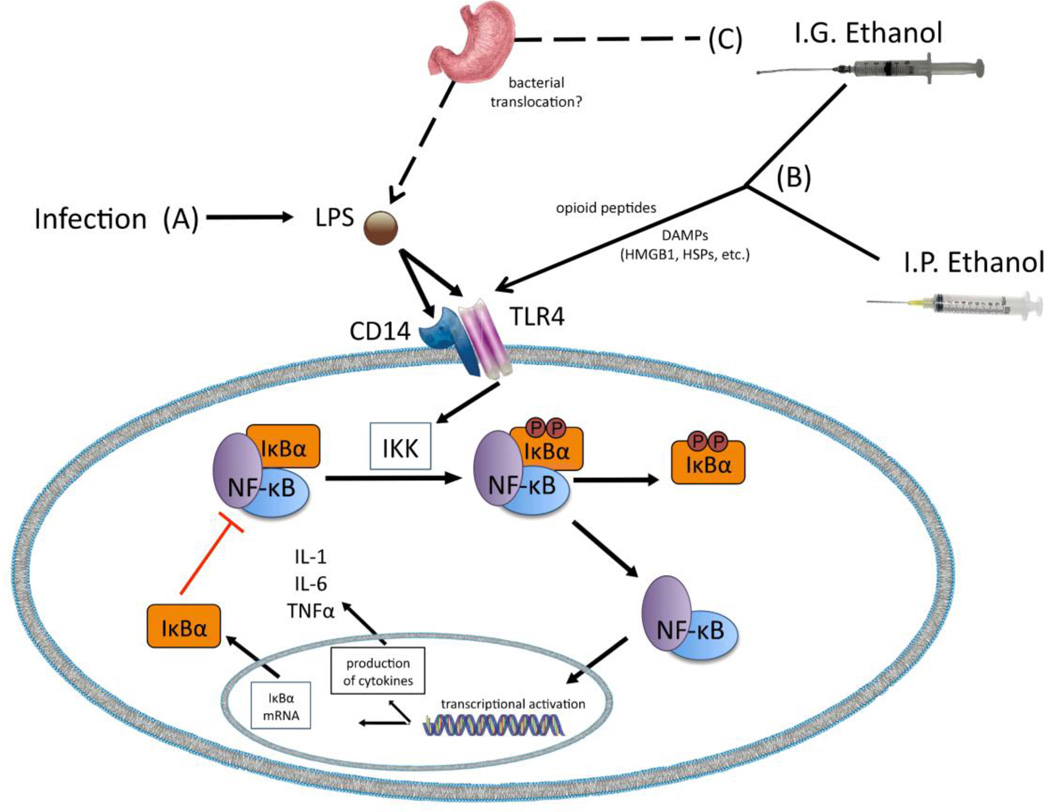Figure 6.
Proposed pathways through which ethanol administration elicits alterations in cytokine gene expression. (A) Bacterial infection induced by administration of lipopolysaccharide (LPS) stimulates an immune response via activation of the TLR4/CD14 receptor complex. In the resting state IκBα binds to NF-κB, thus keeping NF-κB inactive and sequestered in the cytoplasm. Once LPS binds to TLR4s, a signaling cascade is induced that results in activation of the IKK complex. The IKK complex then phosphorylates IκBα, which liberates NF-κB and allows NF-κB to translocate to the nucleus where it activates gene transcription. Ultimately, cytokines including IL-1, IL-6, and TNFα are produced by this NF-κB activation. Additionally, NF-κB activation leads to increased expression of IκBα, with newly synthesized IκBα then binding to NF-κB and suppressing further activation of this pathway. (B) Ethanol delivered via the intragastric (i.g.) or intraperitoneal (i.p.) routes is believed to activate the TLR4 signaling pathway. Ethanol’s actions on opioid peptides and damage-associated molecular pattern molecules (DAMPs) are considered likely mechanisms by which ethanol would stimulate TLR4s. (C) In the case of i.g. administered ethanol, another possible mechanism leading to TLR4 activation is via bacterial translocation in the gut. Under normal healthy conditions, mucosal membranes of the gastrointestinal tract create a physical barrier that contains bacteria within the gut and intestines. Other physiological processes also keep bacteria within the GI tract at bay. Ethanol has been shown to impair these defense mechanisms, with ethanol promoting bacterial growth/accumulation within the gut and increasing intestinal permeability. The latter of these ethanol effects may then allow bacteria to “leak” from the gut to the liver and general circulation, thereby activating the TLR4 pathway.

